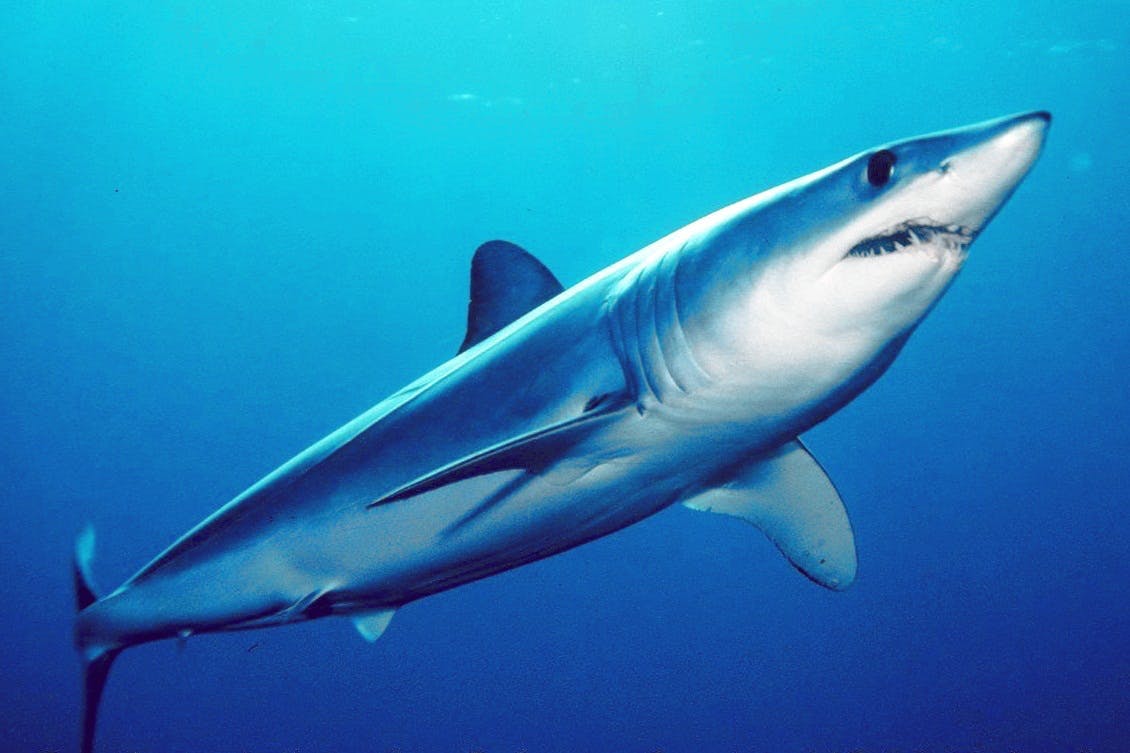The heightened extinction risk for one of the ocean’s most iconic sharks is a stark warning that urgently requires a suite of conservation measures to prevent the species being lost.
The appeal follows the announcement by the Shark Specialist Group of the International Union for the Conservation of Nature (IUCN) that both the Shortfin and Longfin Mako Shark are now classified ‘Endangered’, that is facing ‘a very high risk of extinction in the wild’.
Of particular concern is the Shortfin Mako Shark, the ocean’s fastest fish*, which is facing serious depletion around the globe, including a 60% decline in the Atlantic over about 75 years. Makos are slow to reproduce and are valued in many countries for both meat and fins; however, they are not subject to any international fishing quotas.
The IUCN re-assessments are part of a global project to assess shark population status and trends based on a series of expert workshops and are being funded by the Shark Conservation Fund (SCF). “The new information paints a stark warning – we find ourselves on the precipice of losing these unique species forever,” said Lee Crockett, SCF Director. “The good news is that, with strategic support from SCF, we have the chance to win real protection this year with the right action by governments and fishery management bodies.”
The new mako assessments come ahead of potential game-changer opportunities for their protection this year. In May, world governments will consider listing a record number of seriously at-risk shark and ray species, including makos, on Appendix II of the Convention on International Trade in Endangered Species (CITES)**. SCF is supporting an unprecedented push with key countries to gain the two-thirds majority needed for their inclusion.
The Fund is also supporting efforts, via The Shark League, to secure concrete catch limits for mako in the North Atlantic, one of the regions where the species is most at risk. The Shark League is urging the International Commission for Conservation of Atlantic Tunas (ICCAT) to ban landing of Shortfin Makos, in line with scientific advice, at its meeting in November. As the European Union’s high seas fleets land the most mako sharks, the Shark League is pressing for EU mako catch limits to be established in the meantime.
“This could be the last chance for some of these species. By the time they are assessed again in 10 years, if trends continue, they could be extinct in the wild, and lost to us all forever,” said Crockett. “Yet, even in the face of this new evidence, there is hope: we can help avert the dire predicament they face if countries act now.”
ENDS
Editor’s Notes:
For full details on the new shark assessments by the IUCN see https://www.iucnssg.org/press.html
The Shark Conservation Fund (SCF) is a philanthropic collaboration focused on halting the overexploitation of the world’s sharks and rays, preventing extinctions, reversing declines and restoring populations. Sharks and rays represent one of the oldest and most diverse groups of animals on earth. Many shark and ray species are threatened with extinction because of human demand for their fins, meat, leather, liver, and gills. The decline of sharks and rays is a growing threat to the health and well-being of the oceans and the billions of people that rely on it for food and employment. SCF is the only organization of its kind with a global strategy committed to impacting all major shark fishing, processing, and marketing countries and regions, by harnessing and supporting world-leading expertise and evidence-based practice. SCF is supported by the following partners:
Paul G. Allen Family Foundation
Paul M. Angell Family Foundation
The Leonardo DiCaprio Foundation
The Moore Charitable Foundation
Key Shark Facts:
· The IUCN has classified nearly a quarter of all shark and ray species as Vulnerable, Endangered or Critically Endangered on the Red List, placing them among the most threatened vertebrates on the planet. Some populations have declined by 90% compared to mid-20th century levels.
· As sharks and rays play critical ecological, cultural, and economic roles in our oceans and for coastal communities, their declining numbers are a growing threat to the health of the ocean and jeopardize the livelihoods and food security of millions of people around the world.
--
* Adult shortfin makos have been reliably clocked at 31 mph (50 km/hr); there are claims that they can achieve a burst swimming speed of up to 46 mph (74 km/hr).
**CITES: As one of the world’s earliest and most powerful multinational environmental agreements, CITES provides the overarching legal framework for driving trade controls in sharks and rays. Prior to the CITES meeting in 2013, when five species of sharks, manta rays, and one sawfish species were listed under Appendix II, the international trade of shark products was essentially unregulated. Appendix II listing means that countries are obligated to demonstrate that catch of these species is legal and sustainable before engaging in international trade. Adoption of all the shark and ray listing proposals at the 2019 CITES meeting would double the number of shark and ray species listed and help drive better management measures across the world.
For more information, images and interviews please contact Charlotte Smith: [email protected]



